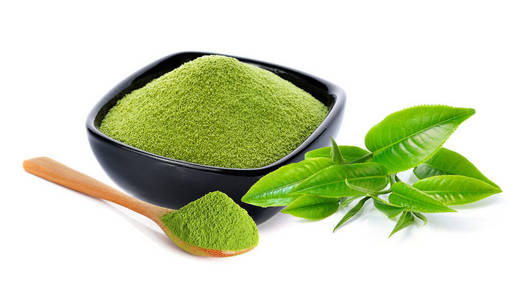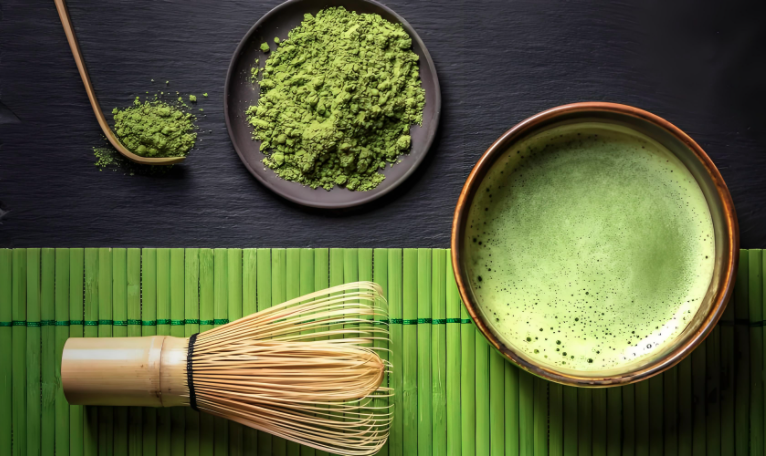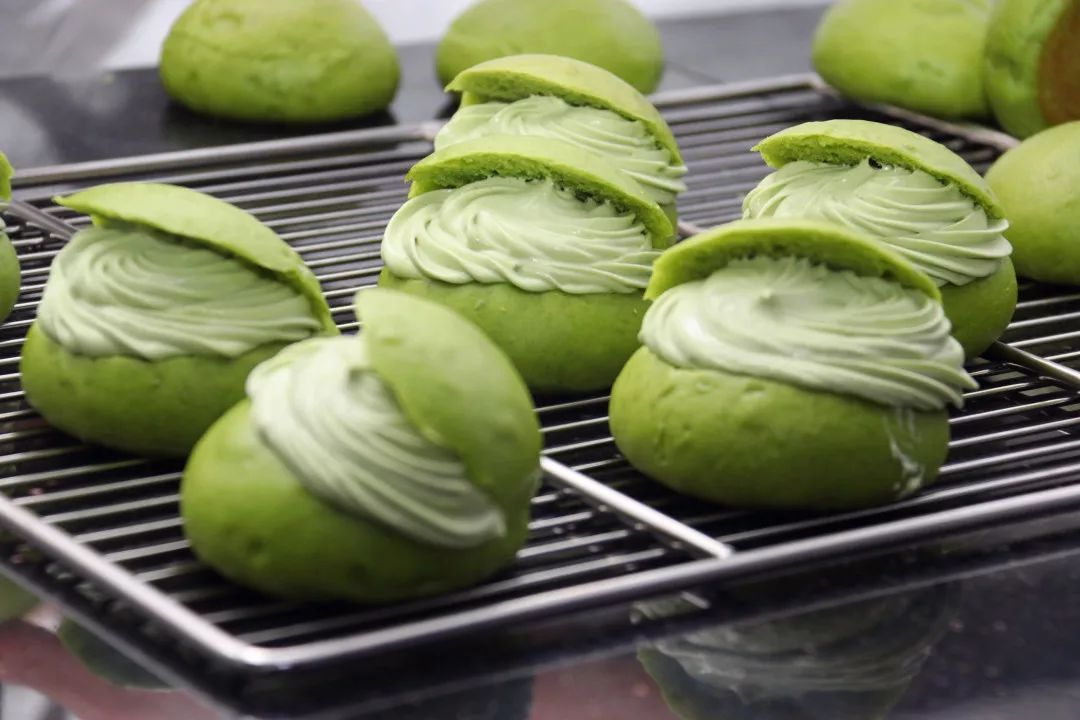Matcha Tea originated in the Wei and Jin Dynasties of China. Its production method involves picking tender tea leaves in spring, steaming them to blanch, and then making them into cake tea (also known as rolled tea) for preservation. When it’s time to eat, first bake the cake tea over the fire to dry it, then grind it into powder with a natural stone mill. Pour it into a tea bowl and add boiling water. Stir the tea water in the bowl thoroughly with a tea whisk until it produces foam, and it’s ready to drink.
Since ancient times, scholars and poets have left behind a large number of poems praising matcha. “The blue clouds draw the wind and cannot be blown away; the white flowers float on the surface of the bowl” is the praise of matcha by the Tang Dynasty poet Lu Tong.
Processing:
The freshly picked tea leaves are blanched and dried on the same day, using the steam blanching method. Studies have respectively shown that during the steaming process of green tea, the oxides such as cis-3-hexenol, cis-3-hexenyl acetate and linalool increase significantly in the tea leaves, and A large amount of A-purpurone, B-purpurone and other purpurone compounds are produced. The precursors of these aroma components are carotenoids, which constitute the special aroma and taste of Matcha Tea. Therefore, the green tea that is covered and steam-killed not only has a special aroma, a bright green color, but also a more delicious taste.
Ingredients:
Matcha is rich in essential nutrients and trace elements for the human body. Its main components include tea polyphenols, caffeine, free amino acids, chlorophyll, protein, aromatic substances, cellulose, vitamins C, A, B1, B2, B3, B5, B6, E, K, H, etc. Nearly 30 kinds of trace elements such as potassium, calcium, magnesium, iron, sodium, zinc, selenium and fluorine.
Purpose:
The basic method is to first put a small amount of matcha in a tea bowl, add a little warm water (not boiling), and then stir evenly (traditionally, a tea whisk is used).
In the tea ceremony, “strong tea” is made by adding 4 grams of matcha to 60CC of boiling water, which is somewhat like a paste. For “thin tea”, use 2 grams of matcha and add 60CC of boiling water. It can be brushed with a tea whisk to produce thick foam, which is very beautiful and refreshing.
In today’s fast-paced society, few people use a chasen to whisk tea for drinking. Matcha Tea is more often used to make various exquisite foods. Green matcha foods have become green flowers on the dining table and are highly sought after and enjoyed by people.
The basic method is:
1. To warm the bowl, first scald the tea bowl along with the tea whisk with boiling water.
2. Adjusting the paste is an experience gained by ancient Chinese people in practice. This procedure is not present in Japanese tea ceremony. Put 2 grams of matcha in a bowl. First, add a small amount of water and mix the matcha into a paste. This can prevent the very fine matcha from clumping together.
3. To whisk the tea, use a tea whisk to stir it back and forth along the W’s trajectory at the bottom of the bowl, allowing a large amount of air to be mixed in and creating thick foam.
Nutrition:
In recent decades, people’s understanding of tea has deepened significantly, and they have also gained a profound insight into the functional material nature of tea. In modern times when the toxic and side effects of antibiotics and growth hormones are increasingly being questioned, tea polyphenols, with their unique biological functions and “green” nature, are increasingly penetrating into people’s dietary lives.
Although ordinary tea contains extremely high nutritional components, only 35% of the tea leaves are truly soluble in water. A large amount of the effective components that are insoluble in water are discarded by people as tea residue. Experiments have proved that eating tea can provide more nutrients than drinking it. The nutritional content in a bowl of matcha exceeds that in 30 cups of ordinary green tea. Changing from drinking tea to eating tea is not only a reform of dietary habits, but also a need to adapt to the fast-paced modern life.
Eika Chang
Beijing Shipuller Co., Ltd.
WhatsApp: +86 17800279945
Web: https://www.yumartfood.com/
Post time: Oct-17-2025


